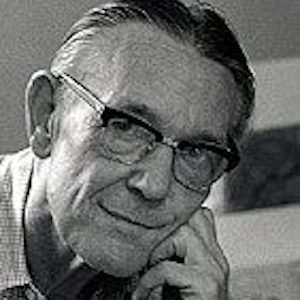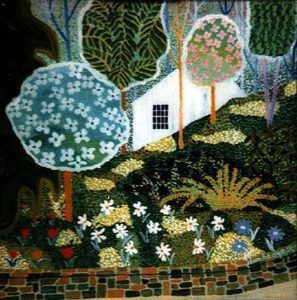Donald Hedges
Modern Architect & Painter
Donald Hedges was a Renaissance man, an American architect and painter whose life unfolded as a tapestry of architectural achievements, artistic expressions, and a deep connection to the Bucks County region.
Early Education and Architectural Training:
Donald Hedges’ educational journey took him from Stanford University in California to the University of Michigan’s School of Architecture, where he earned his Bachelor of Science degree between 1925 and 1929. His academic pursuits laid the foundation for a richly diverse career.
Teachers and Influences:
Hedges’ early professional path was shaped by a familial connection. He had the privilege of working under the mentorship of his sister’s husband, Russell Black, a prominent figure in the field of planning. Black was at the helm of the Tri-State Regional Planning Federation for Pennsylvania, New Jersey, and Delaware during the 1930s. This formative experience profoundly influenced Hedges’ future career and his deep-rooted connection to the region.
Connection to Bucks County:
Bucks County, Pennsylvania, became a central chapter in Donald Hedges’ life story. His sister and her husband, Russell Black, owned a home near the picturesque town of New Hope. The year 1931 marked a significant turning point when Hedges, alongside architect Rolf Bauhan, undertook the remodeling of the Blacks’ home. This project not only introduced him to the charm of Bucks County but also led to a lasting connection.
In 1932, the challenges of the Great Depression brought Hedges and his wife, Peg, to the welcoming embrace of a third-floor apartment at the Logan Inn which was owned by his sister and Russell Black. This marked the beginning of a remarkable venture as they opened The New Hope Craft Shop, situated in the historic old trolley station on Main Street near Bridge Street in New Hope. The Craft Shop, characterized by its innovative approach, attracted visiting patrons, setting a precedent in the community. Remarkably, the Hedges diligently managed this successful business for an impressive 52 years until its closure in 1985.
Donald Hedges’ impact on the Bucks County landscape extended to architecture. He was entrusted with the task of converting the New Hope Grist Mill into what would become the renowned Bucks County Playhouse. This architectural endeavor, undertaken in the late 1930s, showcased Hedges’ talent in seamlessly blending traditional local styling with modern elements.
Community Engagement and Artistic Pursuits:
Beyond his architectural achievements, Donald Hedges was deeply committed to civic activities. He served on the New Hope Borough Council for four years, commencing in 1934. His dedicated efforts contributed significantly to the acquisition of a municipal water system, thanks to New Deal funding. His civic engagement continued as he served on the New Hope-Solebury School Board from 1947 to 1967.

A notable pivot in Hedges’ journey occurred in 1968 when, at the age of sixty-three, he discovered a new passion—painting. Self-taught and fueled by an inner creative spark, he embarked on a remarkable artistic journey. His oil and casein paintings often featured subjects such as animals, plants, and the captivating landscapes of Bucks County. A distinct aspect of his artistic approach was the creation of some works in reverse on Plexiglas, resulting in a unique visual effect.
As an artist, Hedges’ style evolved over time, transitioning from realism to works characterized by humor, fantasy, and a pointillist, mosaic-like quality. His later works radiated creativity and imagination.
Architectural Legacy:
Donald Hedges’ architectural legacy is woven into the very fabric of Bucks County, as evidenced by his impressive portfolio. His architectural creations included:
– Remodeling Russell Black’s home near New Hope, 1931
– Redesigning New Hope’s Grist Mill into the Bucks County Playhouse in the late 1930s
– Neal Building, New Hope, early 1940s
– Henrietta Cunningham House, New Hope, early 1940s
– Huffnagle Press Building, New Hope, circa 1945
– John Carson’s (Nobel Peace Prize Winner) residence, circa 1945
– Bridge Street Building, New Hope, late 1940s
– Badura Residence, New Hope, late 1940s
– Arthur Koestler’s Studio, Hendricks Island, Center Bridge, 1950s
– Doctors Petrie Building, New Hope
– Parry’s Old General Store
– Designing and restoring the three dining rooms and the “Buttery” Crow, a bar and cocktail room, at Lambertville House
Major Solo and Group Exhibitions:
Donald Hedges’ artistic talents found a platform in numerous exhibitions, including:
– Stover Mill Gallery, Erwinna, PA, 1973
He also participated in significant group exhibitions, demonstrating the wide recognition of his artistic contributions:
– Parry Mansion, New Hope Historical Society, New Hope, PA, 1971
– Lambertville House, Lambertville, NJ, 1976
– Phillips’ Mill 50th Anniversary Retrospective Art Exhibition, Phillips’ Mill, New Hope, PA, 1979
– Rodman House, Doylestown, PA, 1986
– Bianco Gallery, Buckingham, PA, 1995
– Phillips’ Mill Annual Art Exhibition, New Hope, PA, 1997-1998
Colleagues and Affiliations:
Throughout his life, Donald Hedges cultivated enduring friendships and collaborations. His artistic journey led to meaningful connections with fellow artists such as Charles Coiner, Paul Darrow, and Stephen McNealey.

